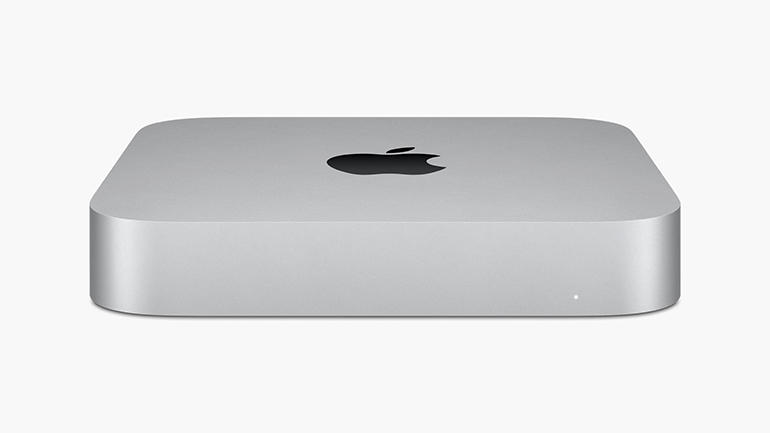'ZDNET Recommends': What exactly does it mean?
ZDNET's recommendations are based on many hours of testing, research, and comparison shopping. We gather data from the best available sources, including vendor and retailer listings as well as other relevant and independent reviews sites. And we pore over customer reviews to find out what matters to real people who already own and use the products and services we’re assessing.
When you click through from our site to a retailer and buy a product or service, we may earn affiliate commissions. This helps support our work, but does not affect what we cover or how, and it does not affect the price you pay. Neither ZDNET nor the author are compensated for these independent reviews. Indeed, we follow strict guidelines that ensure our editorial content is never influenced by advertisers.
ZDNET's editorial team writes on behalf of you, our reader. Our goal is to deliver the most accurate information and the most knowledgeable advice possible in order to help you make smarter buying decisions on tech gear and a wide array of products and services. Our editors thoroughly review and fact-check every article to ensure that our content meets the highest standards. If we have made an error or published misleading information, we will correct or clarify the article. If you see inaccuracies in our content, please report the mistake via this form.
Mac Mini (Late 2020) review: Apple’s most affordable M1 Mac offers great value for money


Apple Mac Mini (Late 2020)
pros and cons
- Affordable
- M1 processor delivers a big performance boost
- Ultra-compact design
- Runs cool and quiet
- RAM and storage purchase-time upgrades are expensive
- No user-installable RAM or storage upgrades
- No discrete or external GPU options
- Editors' review
- Specs
Over the years, it has sometimes seemed that Apple didn't really know what to do with the Mac Mini. Having outlived its usefulness as a 'low-cost Mac' in the Steve Jobs era, Apple has made tentative attempts in recent years to reposition the Mac Mini as a kind of entry-level server and, more recently, as a compact workstation for creative users.
But, just as Apple's home-grown M1 system-on-chip (SoC) has given the ultraportable MacBook Air a shot in the arm, so the new Apple Silicon processor is allowing the Mac Mini to return to its roots as an affordable desktop Mac. And, with a price cut of around £100/$100 for this new model, the new Mac Mini could well find an audience with business users who need a compact and affordable machine for working from home.
The M1-based Mac Mini measures a compact 197mm (7.7in.) square by 36mm (1.4in.) high and starts at £699 (inc. VAT) or $699. You'll need to supply a display, keyboard and mouse, as these are not included in the price.
Design & features
Like its M1 stablemates, the MacBook Air and 13-inch MacBook Pro, the new Mac Mini sticks with a familiar design. To be fair, though, it's hard to improve upon the Mini's compact design, which has had a clear influence on small-form-factor (SFF) rivals such as HP's EliteDesk 705 G5. The colour may have changed from the dark grey of recent years to a lighter shade of silvery-grey, but the impressively sleek system still measures just 197mm square and 36mm high. However, it seems to have lost a little weight, dropping from 1.3kg to 1.2kg.
There have been some changes, though, and a quick look around the back of the late-2020 Mini confirms its return to 'affordable' status for this update. The 2018 version of the Mac Mini had workstation ambitions and boasted four Thunderbolt 3 ports to support multiple displays and other accessories. In contrast, the new M1 version of the Mac Mini now just has two Thunderbolt 3 ports, along with two USB 3.1, Gigabit Ethernet, HDMI and 3.5mm audio output.
The Mac Mini is still pretty versatile, though, with Apple stating that the M1's integrated GPU can support two displays at the same time, including a 6K display via Thunderbolt and an additional 4K display via HDMI. But, of course, you'll need to provide the display(s) yourself, along with a mouse and keyboard, as these components aren't included in the price of the Mac Mini.
The M1 Mac Mini (top) has two Thunderbolt 3/USB4 ports, along with Gigabit Ethernet, HDMI 2 and 2x USB 3.1. The Intel Core i5-based model that's still on sale (above) has four Thunderbolt 3/USB-C ports.
Price & options
Apple rarely cuts its prices, so the fact that the M1 Mac Mini now starts at just £699 (inc. VAT; £582.50 ex. VAT) or $699 is noteworthy. It also confirms that the Mac Mini is going back to basics as Apple's 'affordable Mac', rather than attempting to be a 'pro' machine for creative users like its 2018 predecessor.
That starting price includes the eight-core M1 processor running at 3.2GHz, and we were pleased to see that the entry-level configuration for the Mac Mini gets to use all eight cores of the integrated GPU -- rather than being limited to seven cores like the entry-level configuration of the MacBook Air. That price also includes 8GB of RAM that's built into the M1 SoC itself, along with 256GB of solid-state storage, in a 'unified memory' architecture.
Top ZDNET Reviews
As always, Apple's storage upgrades are expensive: you'll pay £/$200 extra for a 512GB SSD, £/$400 extra for 1TB, and £/$800 extra for the maximum 2TB.
Like the other first-generation M1 Macs, the Mac Mini only allows you to specify up to 16GB of RAM, and it's not possible to do the upgrade yourself, so you'll have to bite the bullet and pay a hefty £/$200 extra at purchase time to get 16GB.
One Intel-based Mac Mini from 2018 remains on sale. This costs £1,099 (inc. VAT; £915.83 ex. VAT) or $1,099 with a 6-core Intel Core i5 processor running at 3.0GHz (4.1GHz with TurboBoost), 8GB of RAM and a 512GB SSD. This Intel model provides a much wider range of CPU, RAM and storage upgrades -- and, crucially, it also ensures compatibility with high-end creative software that may not yet be available as a Universal app for the M1 Macs, and which may run more slowly if you have to rely on Apple's Rosetta 2 emulation/translation technology.
Performance
The M1 processor used in the 2020 version of the Mac Mini is significantly more powerful than its predecessor from 2018. The entry-level configuration from 2018 was based on a quad-core Intel Core i3 processor running at 3.6GHz, and achieved Geekbench 5 scores of 896 for single-core performance and 3,199 for multi-core performance.
SEE: Top 10 iPad tips (free PDF) (TechRepublic)
The new M1 model is in a different league, scoring 1,752 (single core) and 7,713 (multi core). In fact, even when running Geekbench 5 in Intel mode, using Apple's Rosetta 2 technology, the M1 still beat not only its entry-level predecessor, but the Core i5 and i7 models too, with scores of 1,340 (single core) and 6,050 (multi core).
As mentioned, M1 Mac Mini can rely on all eight of its GPU cores, whereas the entry-level configuration of the new MacBook Air only has seven GPU cores available. This makes a modest but noticeable difference to graphics performance, with the Mac Mini achieving 90fps when running the Intel-based Cinebench R15 tests, compared to 85fps for the MacBook Air. It makes a difference for gaming and 3D graphics too, with the Mac Mini achieving 25fps when running Rise Of The Tomb Raider at its highest graphics setting, while the MacBook Air was slightly slower at 21fps. The Mac Mini also ran cool and quiet at all times, even after several successive runs with the Tomb Raider benchmarks.
The new Mac Mini may no longer aspire to being a workstation, but the integrated GPU of the M1 processor does seem to be in a different league compared to previous generations of Intel chips. It will run business software such as MS Office with no trouble at all, even using Rosetta 2, and is more than capable of handling a spot of photo- or video-editing work for presentations or vlogging.
The Mac Mini also offers good value for business users who might be eyeing Windows alternatives. The AMD Ryzen 5 PRO-based HP EliteDesk 705 G5 that we reviewed recently has a similar compact design and price, but only achieved modest scores of 878 and 2,828 for single core and multi core performance in Geekbench 5. Cinebench R15 performance for the EliteDesk 705 is weaker too, at just 40fps. The only oddity here is that -- as with the MacBook Air -- we were unable to run the Intel-based Unigine Valley graphics benchmarks, suggesting that Rosetta 2 isn't quite 100% compatible with existing Intel software. But, as we've mentioned, there is still one Intel-based Mac Mini configuration available for users who may need that guaranteed compatibility.
RECENT AND RELATED CONTENT
MacBook Air (Late 2020) review: M1 chip gives Apple's veteran ultraportable a shot in the arm
MacBook Pro M1 review: Apple amazes with its first Silicon MacBook Pro
Inside the new Mac mini: Does Apple's M1 architecture really leave Intel behind?
Apple M1: Will storage and memory limits be a problem for pros?
M1 Macs: The opportunities Apple seized and sacrificed
Read more reviews
- HP EliteBook 840 G7 review: Compact and solidly built, with great battery life
- HP Pro c640 Chromebook, hands on: Slim and robust, but the display disappoints
- Dell Latitude 9510 review: A compact and very competent 15-inch business laptop
- ZAGG InvisibleShield screen protector for Galaxy Z Fold 2: Cover display protection
- Huawei Mate 40 Pro, hands on: An excellent 5G flagship, but Google is still overboard